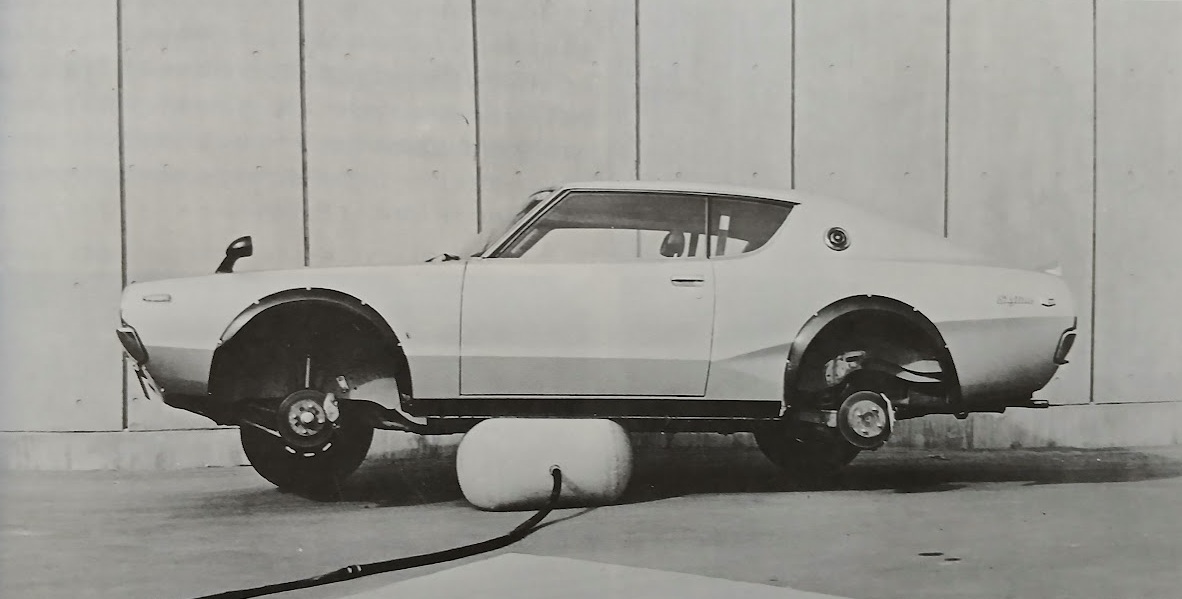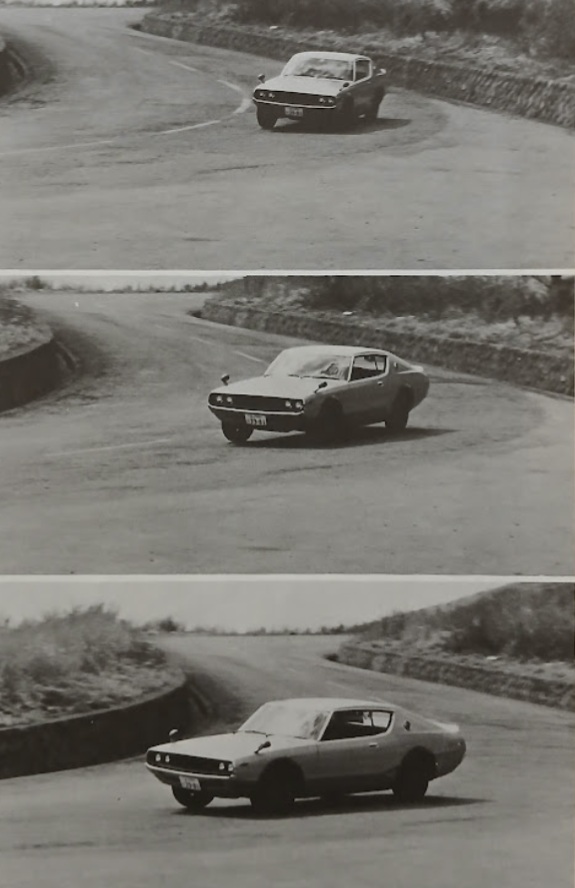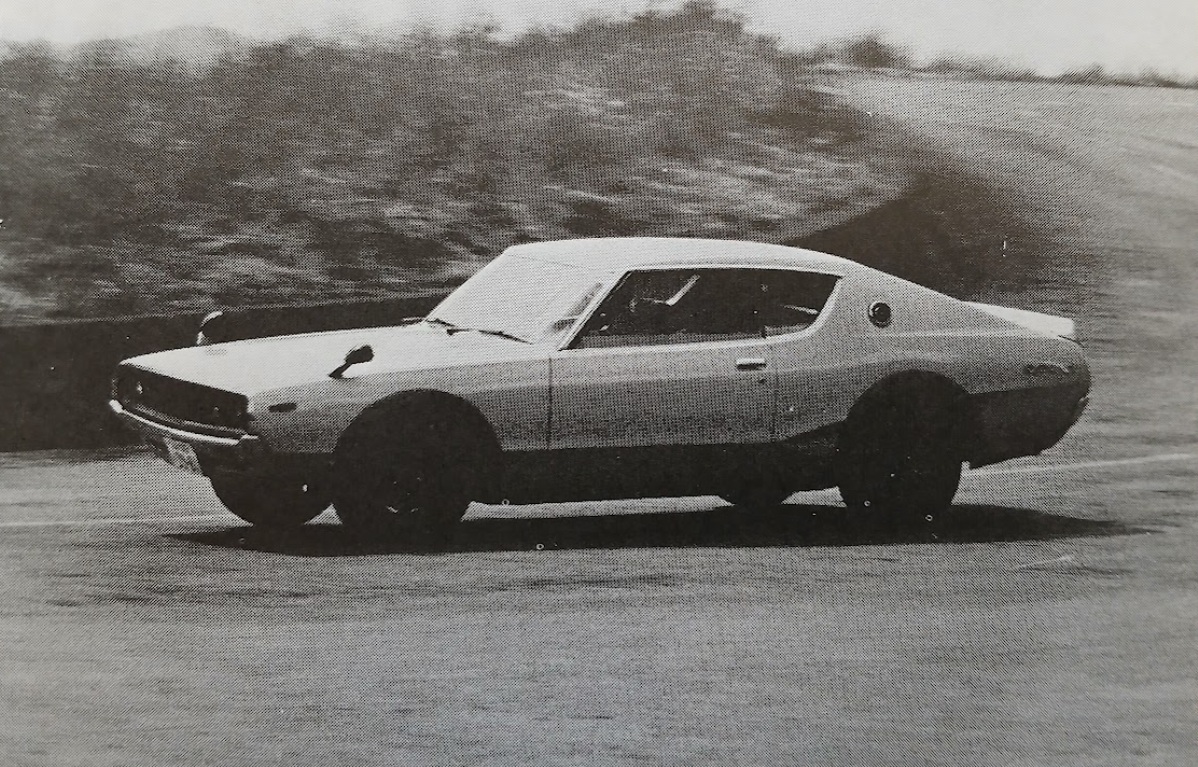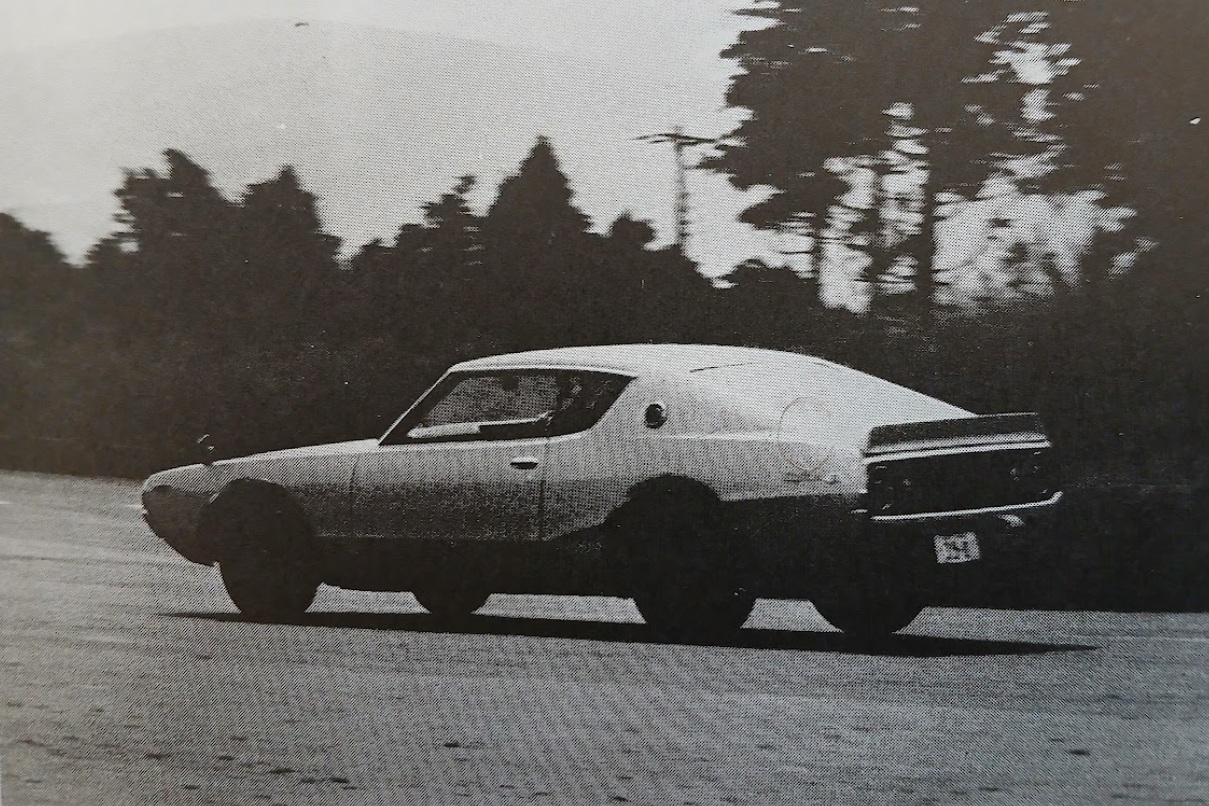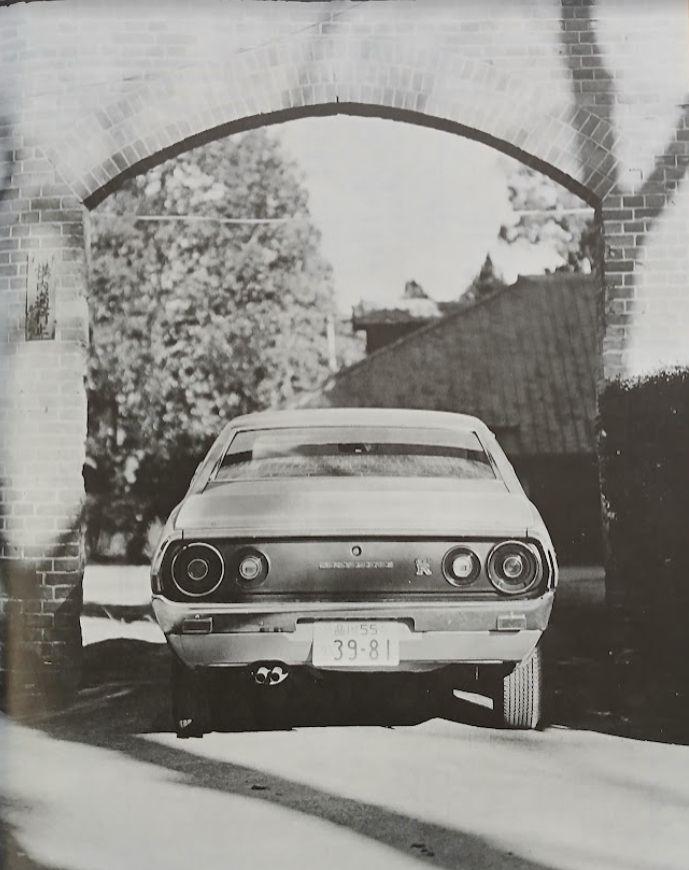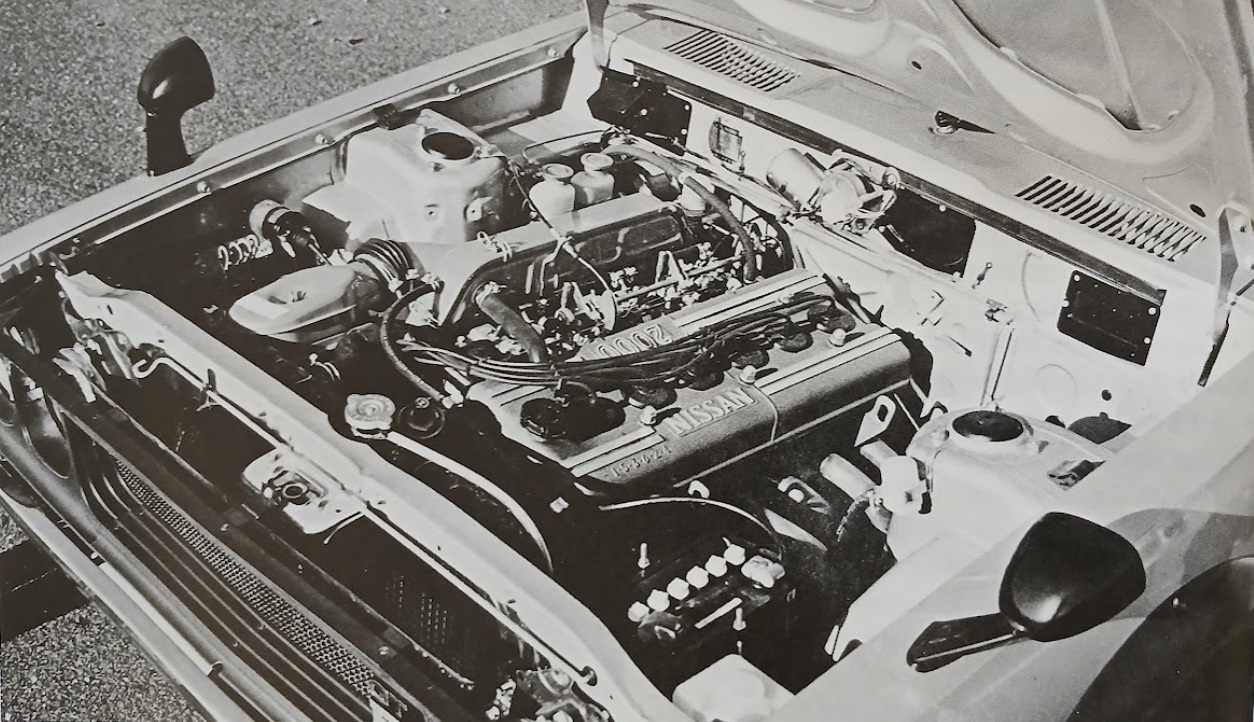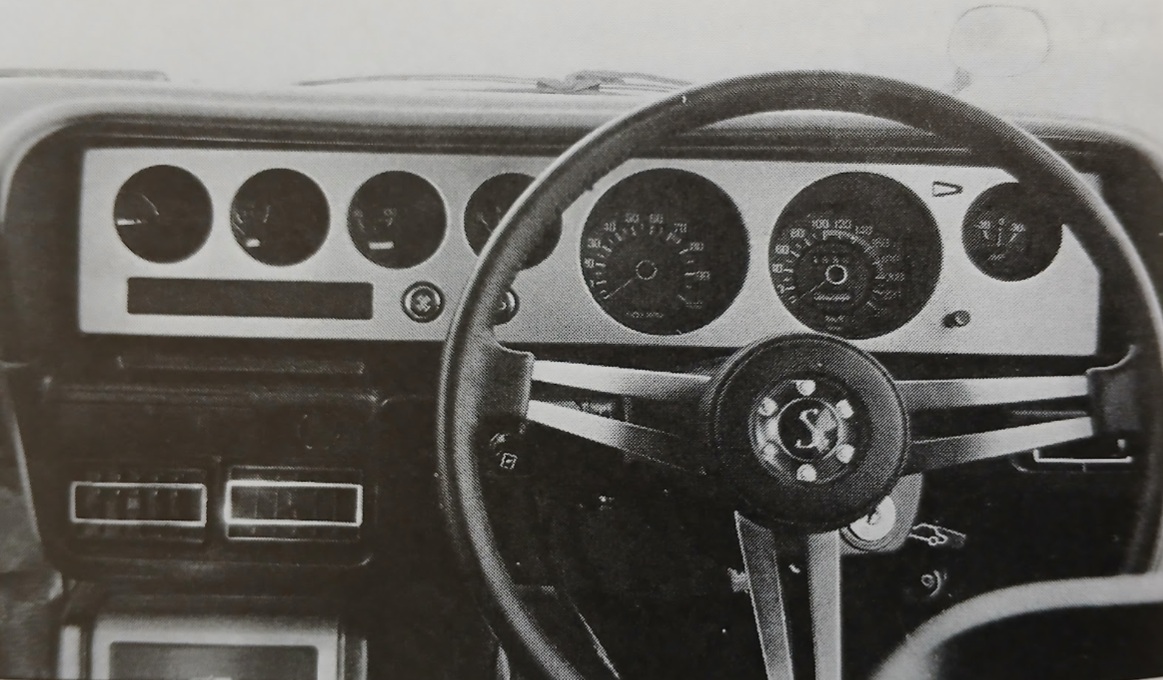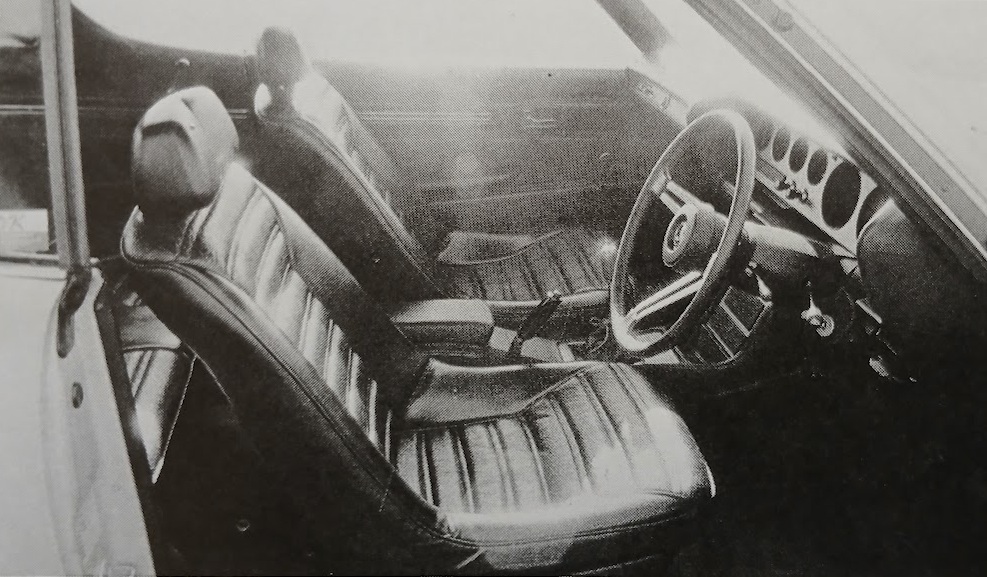Nissan Skyline 2000GT-R Hardtop (1973)
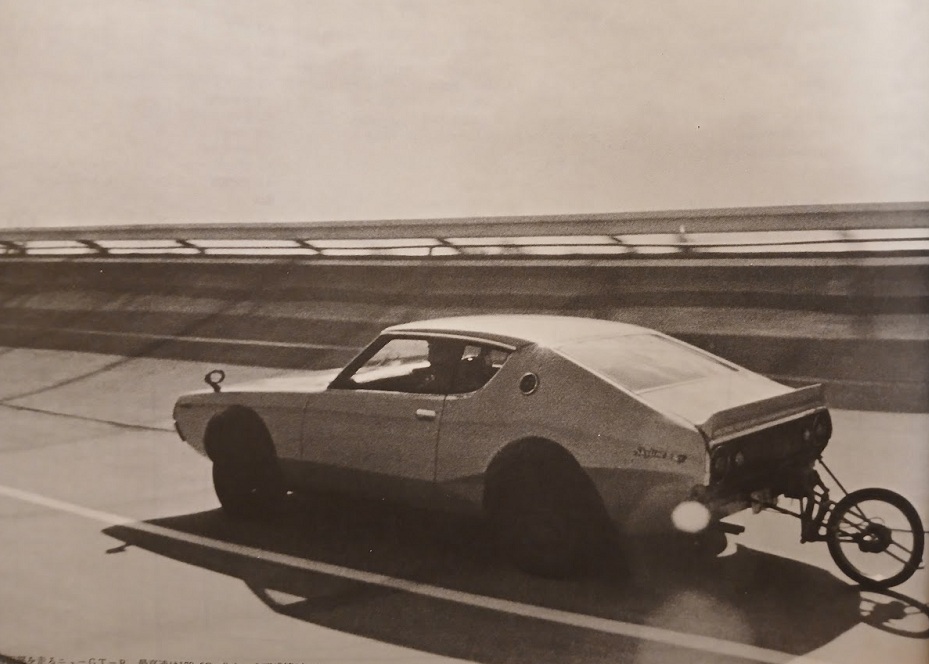
Publication: Car Graphic
Format: Road Test
Date: May 1973
Author: “C/G Test Group” (uncredited)
Summary: The “Ska G-R” has a completely redesigned body. It is fitted with a semi-racing engine inherited from the previous model, but despite the attractive specs, there is nothing particularly impressive about the performance in stock form. The controls are heavy and the handling is crude, but it has a fairly high level of balance and a solid ride. The four-wheel disc brakes require a lot of pedal effort despite servo assist. It has poor fuel economy, is noisy overall, is expensive, and is aimed at wealthy enthusiasts.
Road testing the Skyline 2000GT-R Hardtop
The Skyline GT, or “Ska G,” seems to be one of the “dream cars” for the average Japanese motorist. With a large, flashy, heavy body and all the accoutrements of a personal luxury car, it is difficult to pinpoint anything particularly outstanding about it, and it is merely average among domestic cars in most respects. However, it is quite popular, far more so than its Nissan Laurel and Toyota Corona Mark II rivals, both of which are in the same class with similar styling, equipment, performance, and price, and always holds an overwhelming advantage in sales battles. Not only that, in some regions, it is even a best-seller, rivaling the sales numbers of the Toyota Corolla.
Incidentally, in terms of number of new car registrations in January this year, the totals were 4,835 for the Laurel, 6,744 for the Corona Mark II, and 9,543 for the Skyline. This figure is for all models in the Skyline series, so it is unclear how many were GTs, but according to what we’ve heard, since the full model change of the series in September last year, the highest-selling of the many variations is the hardtop 2000GT-X with five-speed gearbox, a high-priced model that costs 1,025,000 yen in Tokyo (apparently the most popular body color is ivory white).
So why is it that the “Ska G” sells so well?
One cannot help but point to the influence of touring car racing. Since its first appearance at the JAF-GP held at FISCO in May 1969, until it was defeated by the rapidly advancing rotary Savanna (also at FISCO) in May 1972, Murayama-tuned Skylines recorded a continuous history of 50 victories over three full years, with the GT-R being the basis for all of them. Or rather, the GT-R was designed first as an advanced racing car, then put on sale in order to gain homologation as a “mass-produced car,” so it was naturally very different in content from the regular Skyline GT, and since there is probably no need to explain it further at this point, we will shift our focus to the version that was revived in January of this year as the highest-performance model in the new Skyline series.
This car has a new body, having undergone a full makeover last year, and is equipped with almost the same mechanicals as the old GT-R (the one that achieved the famous “glorious 50 consecutive wins”). First of all, the engine is a semi-racing S20 type that has been used since the Prince R380, instead of the Skyline GT’s normal SOHC inline six-cylinder, and drives the rear wheels through a 5-speed Porsche-type fully synchronized gearbox and a limited-slip differential. Not only have all the unnecessary accessories been thrown out, but even the heater and radio are omitted, and the suspension is significantly strengthened. Unlike the old model, the new GT-R comes standard with disc brakes on all four wheels, along with a vacuum servo. Another new feature is the addition of a stabilizer bar at the rear. The front and rear wheel arches have cutouts to accommodate plastic overfenders. the 5J x 14 wheels are half an inch wider than standard and are fitted with 175HR-14 radials. Another major exterior feature is the spoiler on the tail.
For this test, we drove the new Skyline GT-R for about 800km, including instrumented testing at Yatabe, but in terms of power performance, which was the main area of interest, the unfortunate C/G test group was once again disappointed: this is how unlucky we are with Nissan’s semi-racing S20 unit. We have brought models equipped with this engine to the Yatabe high-speed test course three times, first with the original sedan-bodied GT-R, then the hardtop GT-R, and the Fairlady Z432 fter that, but it is hard to say that any of them fully lived up to our expectations (and none of the other times we have driven it were perfect, either). For example, the new GT-R’s top speed was far from the catalog figure (200km/h), recording an average speed of only 178.7km/h on the 1km straight section, and during the attempt, the needle on the rev counter never rose above 5900rpm in fifth gear. The previous hardtop GT-R test car, despite being a 155ps regular-gasoline model, had been carefully maintained at Nissan’s Murayama plant and recorded a flying kilometer speed of 185.6km/h in the C/G test at Yatabe. So, even considering the fact that the new car is 45kg heavier (at 1145kg) and has a slightly larger frontal projection area, it again ended up being unable to fully demonstrate the power it should have. The maximum speeds in each gear were 68km/h in first gear, 102km/h in second, 149km/h in third, and 172km/h in fourth, which topped out at 6700rpm. In terms of acceleration, the GT-R recorded 0-400m in 17.3 seconds, and 0-1000m in 32.3 seconds. The 0-100km/h time of 11.2 seconds was not enough to surpass the level of most 2-liter sports cars, and was inferior to the Galant GTO 2000GSR that we tested at the same time.
It must be an extremely difficult task to perfectly maintain the three Solex 40PHH carburetors of this semi-racing engine and keep the 24 valves within correct clearances, but despite the lackluster ultimate power performance mentioned above, there was almost no fussiness at low rpm. Except for when starting on cold, early mornings, there was no need to even touch the choke knob, and just by pumping the organ-type throttle pedal two or three times, the engine roared to life with the high-pitched metallic roar that is typical of twin-cam units. Even without any load, the water temperature reached 60°C after maintaining 2000rpm for about two minutes, and then it was ready to go. This is an exceptionally fast warm-up time for a 2-liter high-performance engine without a fluid coupler on the fan. And yet, even during continuous high-speed driving or slow driving in the city, the needle on the water temperature gauge never rose above 80°C, the upper end of the normal range.
There is more than enough margin of flexibility, and in extreme cases, the car can maintain 1100rpm, or 30km/h, in fifth gear without any jerking. If you want to accelerate (very slowly), the lower limit is 20km/h in third gear, 30km/h in fourth gear, and 40km/h in fifth gear. However, this is only technically possible, and with the original intent of this car being full-throttle driving, the engine will groan heavily and struggle at speeds below 40km/h, even in third gear. Even if you drive continuously at such low speeds, the engine doesn’t get too temperamental, probably due to the full transistorized ignition. Even if it starts to sputter a little, if you raise the speed above 2500rpm for a while, it recovers quickly, and smoothly revs up to the 7500rpm limit. The test car had a slight flat spot at around 6000rpm, but it was hardly noticeable.
The thing that made the strongest impression on us while driving was the sound this engine made. When you rev it up, in addition to the metallic roar mentioned above, the loud air cleaner intake hiss and the high-pitched, “dry” exhaust note fill the cabin, enveloping the driver. This is because the soundproofing materials in various parts of the body have been significantly reduced compared to the normal Skyline GT, but the sound of the powertrain itself is loud to begin with. At low speeds, the mechanical sounds from the engine’s internals are the most noticeable, and at the same time, the high-pitched, rhythmic clicking of the electromagnetic fuel pump attached to the rear bulkhead is like a woodpecker assaulting your ears from behind.
The floor-shift 5-speed gearbox has a Porsche-type servo synchromesh inherited from the previous model, and the ratio settings of 2.906 / 1.902 / 1.308 / 1.000 / 0.864 are appropriate for road use. However, the shift stroke is excessive, a common drawback of the Porsche type, and quick shifts require exaggerated movements. The synchro was not particularly powerful in the test car, which had 6,000km of rough treatment on the odometer already, and it was easily defeated in quick shifts such as those in the acceleration tests. Gear noise was also clearly audible. The clutch, which requires a pedal force of 19kg, always provided strong bite even during repeated harsh racing starts. During the acceleration tests, perhaps due to a synergistic effect with the limited slip differential, if we tried to be smooth and quickly engage the clutch, the engine bogged down sharply and we lost power. On the other hand, even if we were reckless and stepped on the throttle, held the revs at 6000rpm, and side-stepped the clutch, the resulting time was almost the same. In any case, the pedal effort is too heavy. It is difficult to understand why the clutch is so heavy, even though it has almost the same, long pedal travel as the normal Skyline GT. In practical use, it is excessive, and after driving for a while in the city where frequent operation is required, our left knees started to ache.
The other aspect of the GT-R that we were most interested in was maneuverability (after all, the main points of this type of car are power performance and maneuverability). The handling of the normal Skyline GT on which this car is based is generally stable, but extremely insensitive. In other words, it does not surpass the level of an average domestic passenger car. However, the new GT-R, which has spring rates more than 30% higher, at 2.5kg/mm in the front and 2.6kg/mm in the rear (the damping force of the dampers is the same as the normal GT), has reached a much higher standard. It also has a more refined chassis than the previous GT-R, being equipped with stabilizers not only in the front but also in the rear, and with 5J x 14 wheels and 175HR-14 tires, it always provides a stable cornering attitude and response regardless of the cornering speed. The handling is dominated by fairly strong understeer (the steering force is only slightly heavier than the normal GT, but maintaining that force through an entire corner can be difficult), and there is little body roll, allowing you to run smoothly through turns. Even though the 175-width tires look disproportionately narrow within the large overfenders, the absolute value of grip is high, and all four wheels feel planted, following a fixed path at high speeds.
The response of the recirculating ball steering seems quite uncertain when driving in a straight line, due to the unpleasant free play on-center, and even if you saw the wheel violently 45 degrees left and right while going straight at high speed, the long nose of the car hardly responds. However, once you pass this free play and it starts to turn in, the response becomes almost satisfyingly precise. Even when we dared to give the GT-R a tough slalom workout, we could negotiate the pylons just by aiming with the steering wheel, the car’s line did not push excessively wide, and it ran lightly for its body size. The final breakaway point is signaled by the rear wheels sliding gently outwards, but it is very easy to correct even at the high limit speed. By simply returning the steering wheel, while barely changing the throttle position, you can regain control before it gets out of hand. However, unlike the old model, the GT-R’s steering now has four turns from lock to lock, exactly the same as the normal Skyline GT (and the steering wheel diameter is 40cm). This can make the steering extremely busy, for example, if you are careless and apply too much power in a tight corner in second gear. Also, even in a downhill corner, the tail does not become light like it does in the normal GT. This can be said to be the effect of the newly installed rear stabilizer. Perhaps because of this, we got the impression that the grip of the rear wheels in particular is several orders of magnitude higher than that of the old GT-R. Despite this, the understeer is not overly pronounced.
The change in rear brakes from drums to discs is mostly a matter of spec-sheet appeal, or perhaps a consideration for race tuning. In reality, the difference in stopping power is hardly noticeable, but the discs’ presence is evident by the fact that, even with the addition of a new 6-inch servo, there is almost no reduction in pedal effort compared to the previous GT-R. The braking force is sufficient for the car’s power and weight, and there is little change in attitude during sudden braking, so you can step on the large pedal with confidence. In particular, the tail hardly lifts up when braking, which is reassuring when braking hard into a corner, because even if you delay braking until the last moment before corner entry, it does not adversely affect the handling. However, these brakes are not as fade-free as you might imagine from the amount of force required. In the tough fade test we call “0-100-0,” the initial force of 15kg increased to 46kg by the tenth stop, which is one of the worst cases of fade in any C/G road test to date. It did not cause smoke or burning smells, but the increased effort was a clear symptom of fade. We have not confirmed the grade of pads installed on the test car, but in order to prevent this, it would be necessary to change to stronger-grade pads (because the car is heavy, the reliability of the brakes cannot be neglected), which would then make the force required during normal driving hopelessly large, which would in turn require the servo to be enlarged, to 8 or 9 inches. As we said before, all the controls on this car are unnecessarily heavy, even for a model aimed at a very limited number of enthusiasts.
Contrary to what you might expect from its specifications, the GT-R’s livability, especially the ride comfort, is excellent. The chassis is set up for high speeds, so its settings are of course stiff, but thanks to the heavy body and long wheelbase, it always feels solid and stable, and even if you drive over cat’s eyes, you won’t feel a jolt. The full bucket seat, which has an integrated backrest and cannot be reclined, holds the driver snugly, keeping you in place when driving fast on winding roads even if you don’t use the seat belts. Not only does it provide good support, the seat cushion also has high shock absorption capacity. The impression of good livability is further emphasized by the solid construction of the body. The ride quality of the old GT-R was slightly stiffer than the new model, but somehow the body felt looser, and there were constant creaking noises in various parts depending on the unevenness of the road surface. This has been greatly improved in the new model, and although the noise level in general is high due to the omission of soundproofing materials, the car body itself does not emit any noise.
Considering the car’s intended purpose, it is natural that various accessories have been omitted. However, even if the rationale is to save on homologation weight for racing, the removal of such essential practical equipment as a heater and defroster is more than a little questionable. During the test, not only was it cold without a heater in the early morning, but the film of ice that formed overnight was difficult to remove from the windows, and even after that, they would fog up from the inside, causing us a lot of trouble. If you are going to spend as much money as this car costs, don’t be stingy, and just order the optional heater/defroster at the extra cost of 19,000 yen (after all, you can’t go fast wearing thick clothing). Other features that are included in the standard Skyline GT but are omitted in the GT-R include a radio, rear window defroster, clock, tilt steering column, and anti-glare mirrors.
As expected from its specifications and power performance, fuel economy was generally poor, and it was particularly bad on winding roads, where the car’s characteristics encourage frequent use of high rpm. The average fuel consumption for a day spent flying through the mountains of Izu and Hakone was a dismal 4.5km/l on the required high-octane fuel. The average fuel consumption for the Yatabe session, which included the top speed test, was 4.9km/l, also due to the frequent use of high rpm, and it was just 3.6km/l in city traffic where only low gears could be used (especially in this test section, where the roads were particularly congested). On the other hand, when driving on the highway at around 100km/h, the average fuel consumption was 9.3km/l.
To be honest, no matter how strong a car was in the past in racing, and no matter how much its success has influenced sales, we cannot understand why the manufacturer would go to the trouble of developing such an exotic car at a time when safety and pollution concerns are becoming such big issues. Unlike the normal Skyline GT, the GT-R is not practical at all, and although it is fun to drive, its basic character is quite crude. Such character in a car is not necessarily a bad thing, but since it is targeted at users who can afford to buy a car just for fun, there is no need to be so concerned about keeping the 5-number license plate and limiting it to 2 liters. Why not just go for the SOHC 2.4-liter unit, like the Fairlady 240Z? The exhaust sound and sporty atmosphere will not be as good as a DOHC, but maintenance will be easier and reliability will be better, and it will be smoother and quieter, and from our experience of trying out various Fairlady models, the larger-displacement unit should also be faster than the 2-liter.
In the past, most fast cars were rough around the edges. In times when technology was low, something had to be sacrificed for the sake of performance, but in today’s world, it is by no means impossible to create a car that is smooth, quiet, and effortlessly fast. As the flagship of the Skyline series that defined an era in the history of domestic automobiles, isn’t it about time that it took on this new possibility?
Postscript: Story Photos

